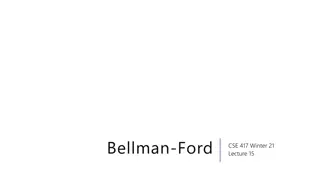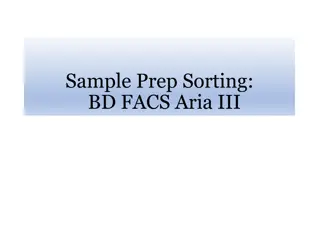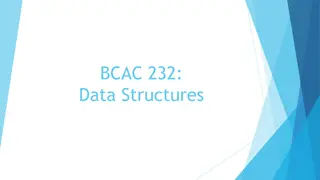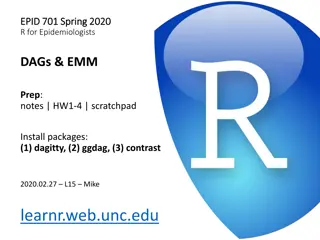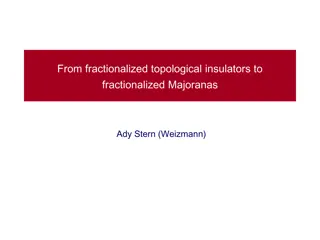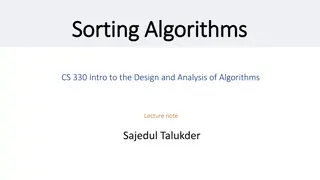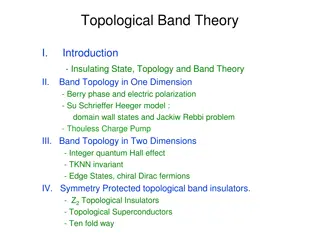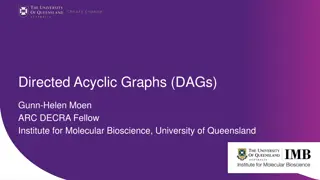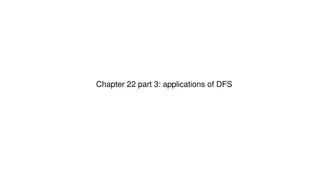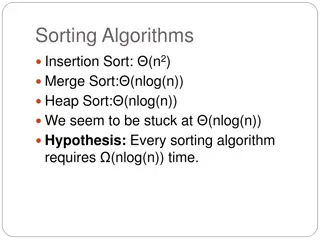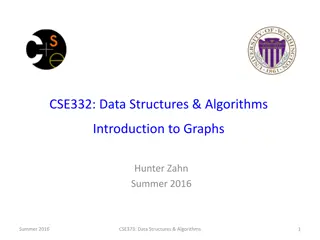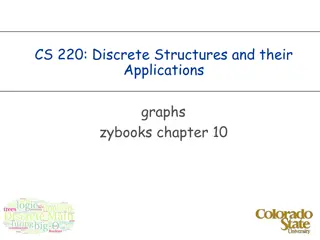Directed Acyclic Graphs & Topological Sorting
The concept of Directed Acyclic Graphs (DAGs) and Topological Sorting, crucial in various domains like scheduling, version control, and cryptocurrencies. Understand the definitions, algorithms like Kahn's Algorithm and DFS solution, performance analysis, and an example scenario involving modified alphabets. Dive into the logic, complexities, and practical applications of these fundamental graph structures."
Download Presentation

Please find below an Image/Link to download the presentation.
The content on the website is provided AS IS for your information and personal use only. It may not be sold, licensed, or shared on other websites without obtaining consent from the author.If you encounter any issues during the download, it is possible that the publisher has removed the file from their server.
You are allowed to download the files provided on this website for personal or commercial use, subject to the condition that they are used lawfully. All files are the property of their respective owners.
The content on the website is provided AS IS for your information and personal use only. It may not be sold, licensed, or shared on other websites without obtaining consent from the author.
E N D
Presentation Transcript
Directed Acyclic Graphs && Topological Sorting by Tian Cilliers IOI Training Camp 2 (3-4 February 2018)
Definitions Directed Acyclic Graph (DAG) A graph such that all of its edges are directed and there exist no cycles A DAG can be used to represent any transitive operation (that is, any operation where if a b and b c, then a c) Used in scheduling, version control, compilation dependencies, cryptocurrencies etc.
Definitions Topological Sort A sorting of the vertices of a DAG such that for directed edge uv from vertex u to vertex v, u comes before v in the ordering A graph is a DAG if and only if it is directed and has a topological sort (no cycles) There may be multiple existing topological orderings for any DAG A topological sorting can be easily reversed by reversing each edge
Algorithms Iterative Solution (Kahn s Algorithm) Demonstration: 1 2 4 6 3 5
Algorithms Iterative Solution (Kahn s Algorithm) Python Pseudocode:
Algorithms DFS Solution Demonstration: 1 2 4 6 3 5
Algorithms DFS Solution Pseudocode:
Algorithms Performance Both algorithms run in O(V+E) time, looping over every edge and every node exactly once Both algorithms require O(V+E) space, only differing by a constant DFS Solution might be more straightforward to implement, but requires a array keeping track of visited nodes as well as nodes in the current path, while Iterative Solution only needs to update in-degree of each node
Example Modified Alphabet (Codeforces Round 290 Div.1 Problem A) A list of names are written in lexicographical order, but not in a normal sense. Some modification to the order of the letters in the alphabet is needed so that the order of the names becomes lexicographical. Given a list of names, does there exist an order of letters in the Latin alphabet so that the names are following in lexicographical order? If so, you should find any such order. Sample IO: Input Output 3 rivest shamir adleman bcdefghijklmnopqrsatuvwxyz
Example Modified Alphabet (Codeforces Round 290 Div.1 Problem A) Solution: Between every consecutive pair of words, draw an edge between the first two different letters indicating that for the first word to be before the second one, the selected letter in the first word should come before the selected letter in the second word. A topological sorting of this graph gives the answer.
Example Substring (Codeforces Round 460 Div.2 Problem D) You are given a graph with n nodes and m directed edges. One lowercase letter is assigned to each node. We define a path's value as the number of the most frequently occurring letter. For example, if letters on a path are "abaca", then the value of that path is 3. Your task is find a path whose value is the largest. Sample IO: Input Output 5 4 abaca 1 2 1 3 3 4 4 5 3
Example Substring (Codeforces Round 460 Div.2 Problem D) Solution: Use a DP approach, storing the amount of letters j you can get up to some node i in f[i][j]. Run a topological sorting algorithm (processing dependencies first) but for every node i, instead of adding any descendant k to a list containing the sort, update f[k][*] using f[i][*]


